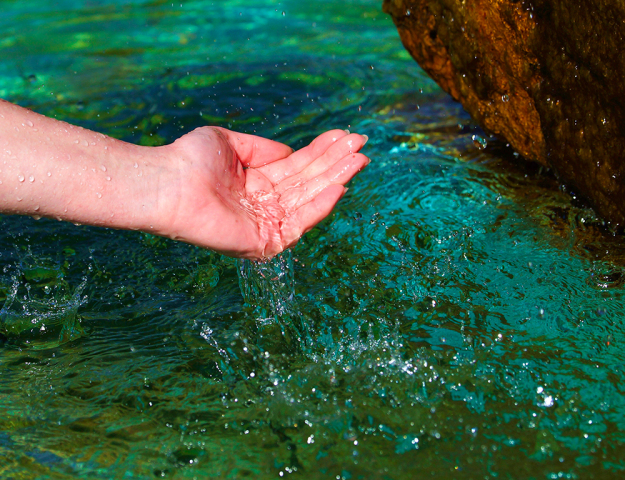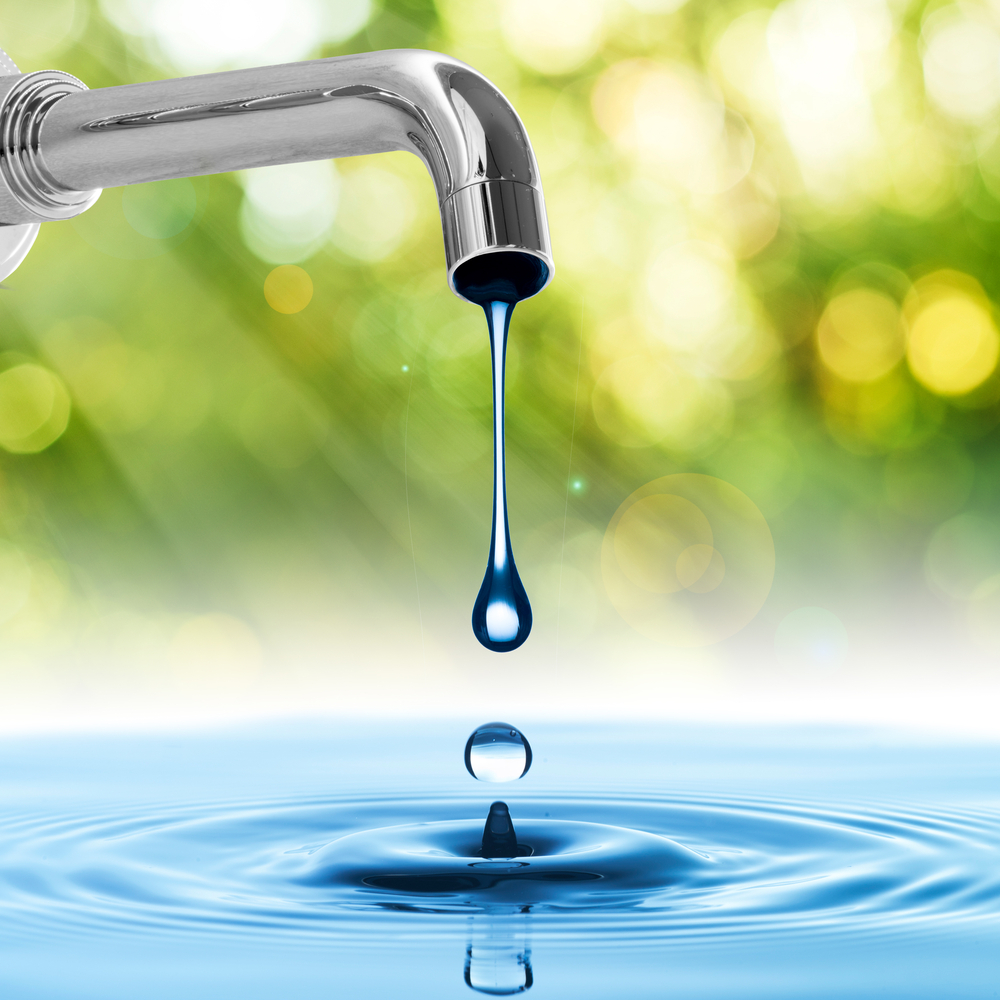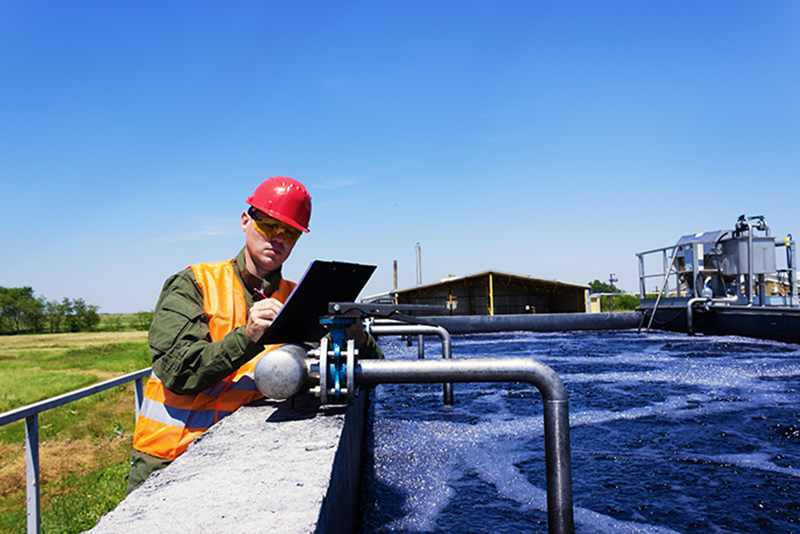
Drinking water: polymers make our mouths water
How can drinkable water for all be achieved? How can water be purified to meet some industries’ needs for immense quantities of high-quality water? Polymer membranes play a key role in making water drinkable.
The Egyptians used coal
There is no secret regarding what it takes to purify dirty water: it must be filtered! Over 4,000 years before the discovery of microbes and other bacteria, the Egyptians had already figured this out. They had empirical evidence to support that water drawn directly from the Nile could make the population sick. Archaeologists discovered that this highly advanced civilisation had developed an activated carbon filtration processes. The very simple process involved filtering water through vegetable charcoal. How the Egyptians arrived at this conclusion is a mystery. It could be that they found that the water purified using this process lost its putrid smell, which is often synonymous with germs and bacteria. Although activated carbon is still used in water filter pitchers, the original technique has been improved upon. The activated carbon is able to eliminate a large proportion of the impurities in water by capturing large bacteria, heavy metal residues and some viruses, but it mainly provides comfort by removing the smell of chlorine found in most tap water. There is good reason for this: tap water in developed countries is perfectly drinkable since it is purified in water treatment centres.

Water purification is widespread in many countries, making tap water perfectly drinkable. |
Polymers navigate in cloudy waters
Before arriving at the tap, the water has already navigated a very long obstacle course. Water, whether fresh or waste, always ends up first at a treatment centre. It is filtered through grates with increasingly tight meshes in order to eliminate larger waste. It is then desilted through decantation and degreased through an injection of air bubbles which pushes the grease to the surface. The water is then rested for a few days so that it can be decanted and to let impurities sink to the bottom. Despite these operations, some very fine particles either never touch bottom or take too long to do so. This is remedied by adding a flocculant, i.e. a polymer such as polyacrylamide or a copolymer made of acrylamide and acrylic acid. The flocculant causes the suspended particles to agglomerate and rise to the surface, and they can then be removed using an ordinary sieve.

Thanks to the flocculating effect of polyacrylamide, the fine particles rapidly agglomerate at the surface. They can then be removed using a sieve.
|
Membrane filtration: pores save the day
The water goes through one final phase before being let into supply lines: membrane filtration which, as its name suggests, involves filtering the water through porous membranes in order to capture microscopic elements. Polymers are now an intrinsic part of this process, and will in fact soon be used exclusively. Membrane filtration is highly regulated, and each type of membrane is classified according to the size of its pores. Microfiltration membranes whose pores measures between 0.1 and 10µm are able to capture all forms of bacteria, macromolecules, colloids, etc. They are used to reduce the number of microorganisms and to pre-treat the water. Ultrafiltration membranes capture particles ranging between 0.001 and 0.1µm in size, i.e. viruses, macroproteins, antibiotics, etc. They are mainly used in the food industry and for certain drinks. However, the finest of them all are nanofiltration membranes (between 0.1 and 0.001µm) which separate most unwanted elements from the water.
Tubular plasticsContrary to conventional wisdom, filtration membranes are not always flat filters through which the water flows as it would through a sieve. In many cases, the system is made up of more or less dense bunches of polymer fibres, depending on their expected function. From afar, they resemble whalebone. |

Polysulfone is the polymer favoured by membrane filter manufacturers who have selected it for its stability and exceptional resistance to acidity. |
In most cases, they are made from polysulfone (PES), a very stable polymer that remains effective regardless of the water’s acidity. And that’s not all! They have become popular with pharmaceutical laboratories and the food industry thanks to their ability to filter water up to temperatures of 90 °C without deteriorating. Polymer membranes are easy to maintain, inexpensive and quickly manufactured, which makes them very popular in almost all industries, particularly given the fact that they are often approved for industries requiring very pure water such as those linked to insulin, a drug used by millions of people with diabetes around the world. Membrane technology is not new and existed prior to the appearance of polymers. Membranes made from vegetable or ceramic fibres were very expensive. Currently, only those made from ceramic fibres, which can withstand very hot water (over 100 °C) are still able to stand against the impressive spread of polymers in this area. But for how much longer? Throughout the world, many companies are increasingly investigating the properties of PEEK (PolyEtherEtherKetone), a still relatively expensive polymer which is also able to withstand very high temperatures. In addition, most polymer membranes have successfully passed the very stringent certification tests for use in the pharmaceutical and/or food industries.
Although they dominate their field, plastics manufacturers continue to research ways of improving their polymers. French manufacturer Arkema, in collaboration with Polymen, a membrane manufacturer, recently developed a new type of membrane using PVDF Kynar© fibres. This hollow and ultra-filtering fibre is durably hydrophilic, providing it with extra longevity, and its pores do not clog up as fast and guarantee a stable flow of water.

Research continues unabated, and new materials such as Kynar©, a durable hydrophilic polymer, and e PEEK, a polymer known for its ability to withstand high temperatures, are now used to make membrane filters. |
LifeStraw, Waterwheel, watercone: polymers get water to NGOs
High-performing, inexpensive and relatively easy to manufacture polymer membranes have already piqued the interest of industry and companies specialising in treating and delivering water to individuals. For some years now, they have been the favourites of certain non-governmental organisations whose mission is to provide drinking water to populations who are furthest away from sources of clean water, particularly in Africa.

LifeStraw’s success is partly due to the ease of use and maintenance of polymer membranes. It is a particularly effective water purifying system which has provided pure water access to over 200,000 children in Kenya. |
One of the most notable solutions is the Danish LifeStraw. It is a filtering straw able to purify 1,000 litres of water by capturing 99% of parasites and other bacteria. The concept is a fairly simple one using PESU membranes. The LifeStraw is available in various versions, from the smallest and easily transportable version ideal for travellers, to larger formats equipped with a tank that are intended for villages. In Kenya, for instance, over 330 schools have been provided with a LifeStraw, providing access to pure water to over 200,000 children. |
Thanks to its success, similar projects are planned for India and Mexico. Finally, thanks to these polymer membranes, local populations no longer need to boil water on a charcoal fire. This helps to protect forests and reduce CO2 emissions. In Kenya, where CO2 savings have been assessed by a specialised body, this led to carbon credits being sold to major companies such as Land Rover. The millions of dollars collected were used to provide filtering straws to a million homes. A true virtuous circle.
|
The WaterWheel from American NGO Wello is sure to put an end to the stereotype of the African or Asian woman transporting a can of water on her head for several miles. The idea is so simple that one could rightly wonder why no-one thought of it before. The WaterWheel is no more, and no less, than a wheel-shaped tank made from food-grade high-density polyethylene. It can be pushed (or pulled) using its handle, and therefore helps carry water from the well to the home without (too) much effort. The tank’s 45-litre capacity helps save on the number of trips, since the usual water cans hold between five and 10 litres. |

Simple and smart, the Waterwheel is designed to carry 45 litres of water. Its durability enables it to take on any terrain. |

Thanks to the polycarbonate dome’s shape, only the sun’s power is needed to distil brackish water and make it fit for consumption. |
Finally, although the invention is over a decade old, we would be remiss if we failed to mention the Watercone. This polycarbonate cone measuring around sixty centimetres in diameter, which is as light as it is solid, transforms brackish water into fresh water by harnessing the power of solar energy. When the water is placed inside, it evaporates and condenses on the sides, along which it flows to ultimately be recovered in gutters around the edge of the cone. The cone can then be upended in order to collect the water. Although the cone can only recover around two litres of water per day, it has found success in those countries cruelly lacking pure water as it is easy to use, easy to maintain, and very affordable. Another advantage of the Watercone is that it can desalinise seawater. The principle obviously remains the same and, in some ways, it is the opposite of that used in salt marshes. In this case, the water is recovered, not the salt. |
|
|





